
The Ultimate Guide To Growing Milkweed Species
Published: 27/03/2023 | Updated: 10/09/2023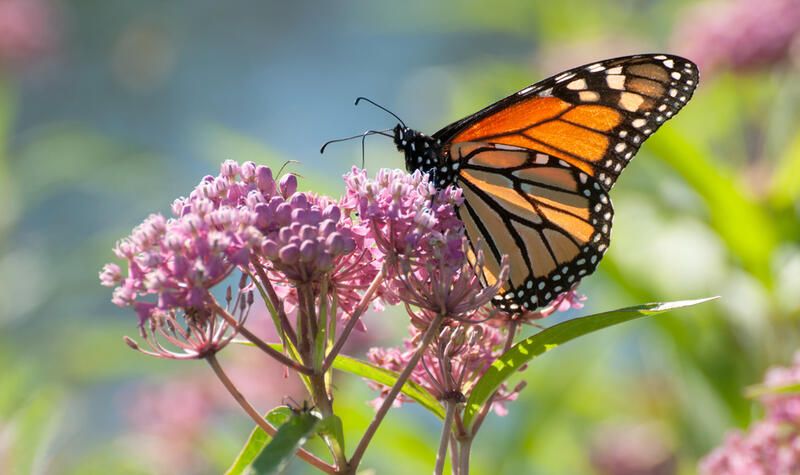
One of the most beautiful and fascinating plants to grow in your garden is the milkweed plant.


Milkweeds are abundant and easy to grow, as well as being one of the best native plants you can use to attract insect pollinators like bees, butterflies, and moths.
In this guide, we’ll cover everything from identifying which species of milkweed is native to your area, what conditions help ensure healthy growth for these plants, and how best to transplant seedlings or start seeds indoors if you want an early start on spring planting.
What is Milkweed
Milkweed is the only plant that monarch caterpillars eat. It's a native plant that grows in the wild and can be found all over North America.
It is also a perennial plant, meaning it grows new leaves each year and dies back to its roots at the end of winter.
The Asclepiadaceae family includes about 2,000 species worldwide, with over 500 found in North America alone!
Botanical Breakdown of Milkweed
Milkweed is a perennial herb that belongs to the Asclepiadaceae family. It's also known as Asclepias syriaca, and it has several common names including butterfly weed, silkweed, and milkweed.
This plant is an herbaceous perennial that grows in temperate regions around the world.
The genus name of milkweeds comes from their milky sap which contains alkaloids that are toxic to humans but not insects or birds (with whom they coevolved). The species' name syriaca means "from Syria."
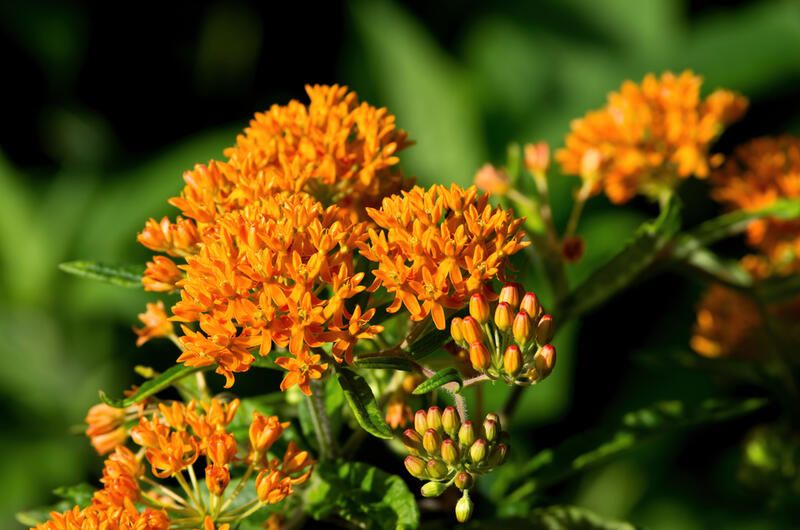
Common Milkweed (Asclepias syriaca)
Common milkweed (Asclepias syriaca) is the most common species of milkweed in the United States. It can be found in all states except Alaska, Hawaii, and Nevada.
Common milkweed is also known as butterfly weed because it attracts butterflies and bees to its flowers.
This plant grows best in moist soil that receives full sun regularly throughout the day; however, it can tolerate partial shade if necessary.
The leaves grow up to 3 feet long with serrated edges that look like crescents when they fold over each other at night or during cold weather conditions such as frosting or snowfall--this makes them easy for monarch butterflies to lay eggs on!
The leaves turn red-orange during the fall months before falling off during wintertime.
Swamp Milkweed (Asclepias incarnata)
Swamp milkweed (Asclepias incarnata) is native to the eastern United States and can grow up to 3 feet tall. Its pink, red, or white flowers bloom from late summer through fall.
Asclepias incarnata can be grown as an annual or perennial plant in pots or the ground; it prefers full sun but tolerates partial shade with good drainage.
Showy Milkweed (Asclepias speciosa)
Showy milkweed (Asclepias speciosa) is a native species of milkweed that can be found in the eastern half of the United States.
It's a perennial, herbaceous plant that grows to about 3 feet and blooms from June through August with pink flowers.
Showy milkweed prefers full sun but will tolerate partial shade if necessary.
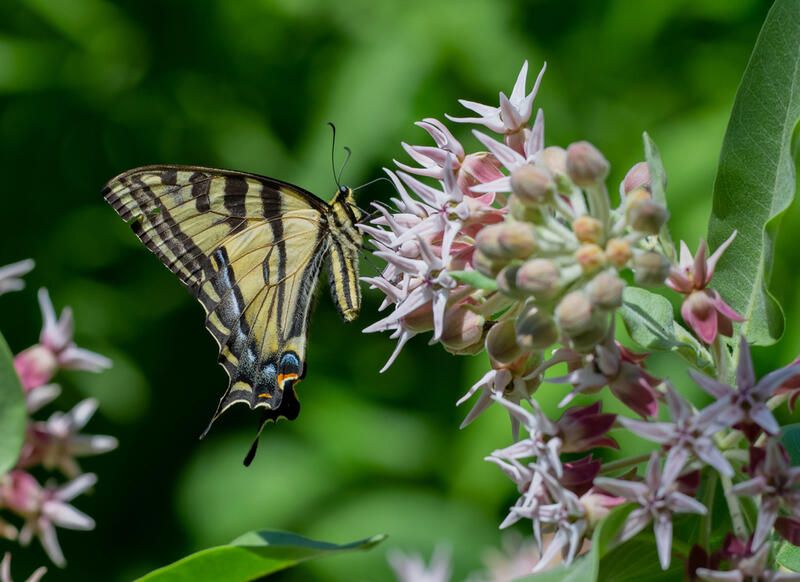
Tropical Milkweed (Asclepias curassavica)
Tropical milkweeds are hardy enough to grow in USDA zones 9-11, which means they can survive temperatures below freezing during winter months.
However, just like many plants, they won't tolerate any frosting at all during growing seasons.
If you live in an area where the temperatures can drop to below zero, then consider starting your seeds indoors before transplanting them outside.
Then, you can plant them outside once temperatures have warmed up enough so they don't get damaged by cold weather conditions.
You'll also need plenty of sunlight if possible as this will help speed up germination times too--so make sure not only where you plant them, but also how much sun exposure each plot receives throughout each day.
Butterfly milkweed (Asclepias tuberosa)
Butterfly weed is a perennial plant that grows to about 3 feet tall. The flowers are orange and bloom from June to August, attracting butterflies and other pollinators.
Butterfly weed can be used as a cut flower, but it should be planted in full sun with well-draining soil. This species is native to the eastern United States, where it prefers dry woods or prairies with sandy loam soils.
Whorled Milkweed (Asclepias verticillata)
Whorled milkweed (Asclepias verticillata) is native to North America, where it can be found growing in various habitats.
The leaves are whorled (arranged in a circular pattern), which gives them their name: "whorled" means having three or more parts arranged around a central axis like the petals of a flower or leaves on a stem.
The flowers bloom from late summer through fall and produce pink-to-purple colored clusters at the ends of their long stems.
The flowers are followed by seed pods that turn brown as they ripen into seeds for next year's plants!
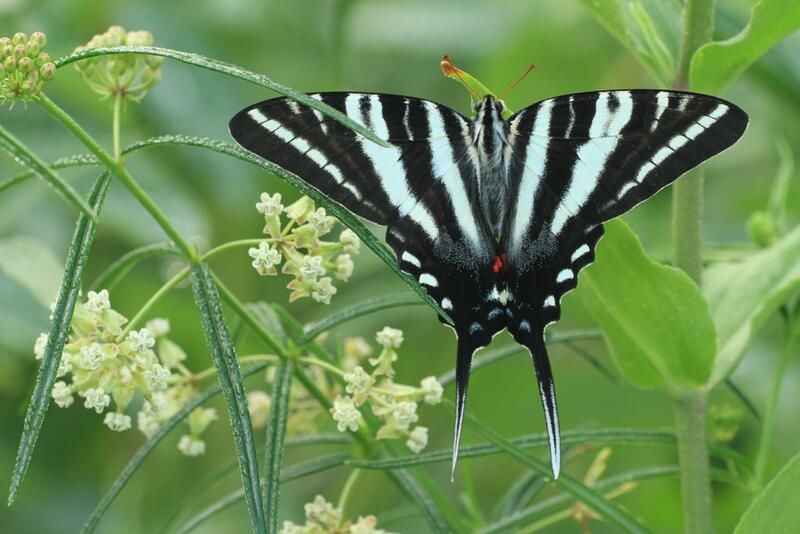
Prairie Milkweed (Asclepias sullivantii)
Prairie Milkweed (Asclepias sullivantii) is a native plant that grows in the Great Plains region.
It blooms from late summer through fall and can be found growing in prairies, meadows, and along roadsides.
The tall stalk of Prairie Milkweed has purple flowers on it.
Purple Milkweed or Horsetail Milkweed (Asclepias purpurascens)
Purple milkweed is a native plant to the eastern US and can grow up to 6 feet tall.
It blooms in late summer and fall, with purple flowers that are about 2 inches wide.
This species of milkweed prefers dry soil, so consider planting it in areas where water doesn't collect after rainstorms.
It will thrive in USDA zones 4-8, which includes most of North America except Alaska and Hawaii.
Aquatic Milkweed or White Waterlily Milkweed (Asclepias perennis)
Aquatic milkweed is a perennial plant that grows in many areas of the United States. It's drought tolerant, so it can thrive even in areas with poor soil and little water.
Aquatic milkweed is often used as an ornamental plant in landscape design due to its colorful flowers and attractive leaves.
This species is also known by its common name "white water lily" because it resembles this aquatic plant (although it doesn't grow underwater).
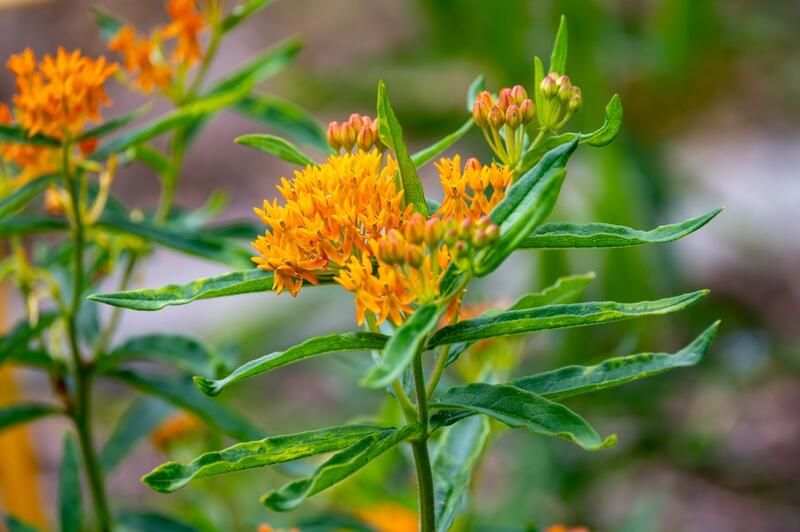
Poke Milkweed or White-stemmed Sagewort (Asclepias exaltata)
Poke Milkweed or White-stemmed Sagewort (Asclepias exaltata) is a perennial plant that grows up to two feet tall.
It has a white flower that blooms in early summer, which makes it easy to identify.
This milkweed species can be grown from seeds or cuttings and can be grown in zones 4-9.
There are over 100 species of milkweed native to North America!
Milkweed is a perennial herbaceous plant that grows in North America.
There are over 100 species of milkweed plants, so it's important to pick one that is appropriate for your area.
Milkweed plants have many uses, including medicinal and ornamental.
Native Species of Milkweed to Look For
While many non-native species of milkweed are also suitable for monarch butterflies, it is important to plant native species.
Native milkweed plants provide a habitat for wildlife and pollinators, and they help maintain the health of our ecosystems.
This is especially true for monarch butterflies, which depend on specific types of milkweed plants to lay their eggs on (and survive).
Understanding the Difference Between Annual and Perennial Milkweed Plants
The first thing to understand is that there are two types of milkweeds: annuals and perennials.
Annuals are plants that grow from seed, flower, and die in one growing season.
Perennials live for more than one growing season and often come back year after year.
Annual Milkweed plants include the Common Milkweed (Asclepias syriaca) and Tropical Milkweed (Asclepias curassavica).
These species produce flowers that have large amounts of nectar which attracts bees and butterflies as pollinators; however, they also attract monarch caterpillars who feed on their leaves during their larval stage!
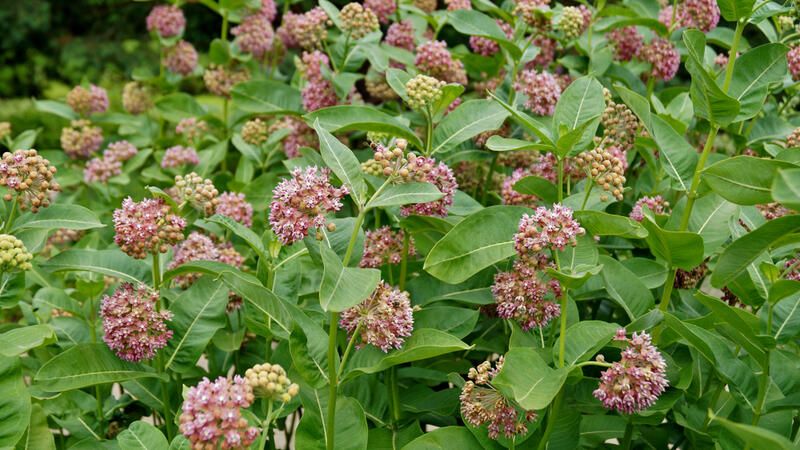
Benefits of Growing Milkweed Plants in Your Garden
Growing milkweed plants in your garden is a great way to help monarch butterflies, attract pollinators and other beneficial insects, and give back to the environment.
Milkweed plants are native to all 50 states (except Hawaii). They're also perennial so you don't have to plant them every year!
How to Grow Your Milkweed in Your Garden
Plant milkweed is simple, but there are some things you should know before you get started.
Milkweeds need to be planted in full sun and watered regularly.
They also benefit from being fertilized once or twice a year with compost or fertilizer for flowering plants (available at most nurseries).
A healthy milkweed plant will grow tall and strong, so make sure that you keep it well-watered during dry spells and don't let it become too rootbound in its pot by adding new soil everyEssentialyears.
Basic Conditions for Growing Milkweeds
Milkweed plants are native to the Americas and are herbaceous perennials that grow best in full sun.
They thrive in USDA hardiness zones 3-9, with some species even being hardy enough to survive winters as cold as -30 degrees Fahrenheit!
Although you can grow milkweeds indoors, it's best to plant them outside if possible because they need plenty of sunlight and room to spread out their roots.
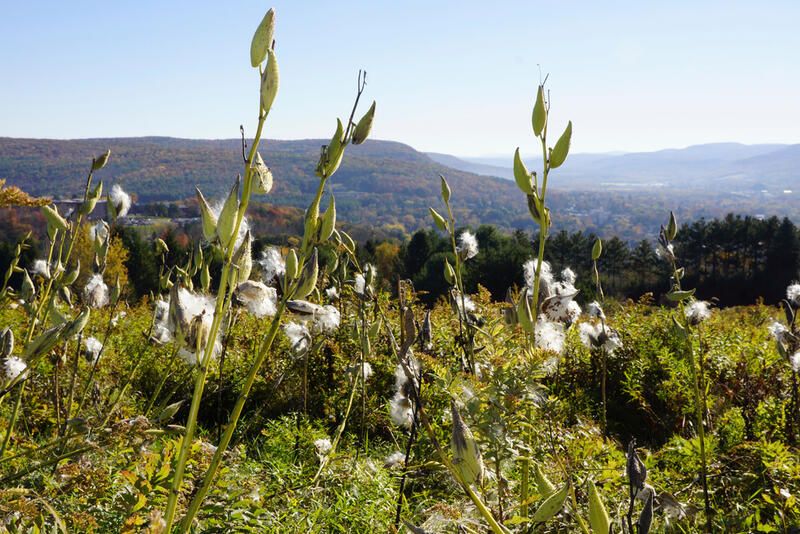
How to Sow the Seeds of a Milkweed Plant
Growing milkweed from seed is easy, but it's important to get the basics right. You need a container with drainage holes, as milkweed seeds will not germinate if the water sits on them for too long.
It can be any size or shape, from an old yogurt cup to an egg carton, as long as it has some kind of drainage system built in.
Sow your seeds in the fall or early spring (late March through May). The ideal temperature range for sprouting is between 65-70 degrees F (18-21 C).
Soil should be well drained and slightly acidic (pH 6-7), but not overly alkaline.
Either use a potting mix designed specifically for growing plants from seedlings, or make your own.
One way is by combining equal parts of peat moss, vermiculite, and perlite.
How Often Should You Water a Milkweed Plant?
The answer to this question depends on where you live and the climate of your area. Milkweed plants are drought tolerant, but they still need water to grow.
In areas with a lot of rainfall, or during the cooler months when there is not much heat from the sun (such as during winter), milkweeds do not need as much water as they would during summertime when temperatures are high and there's little rain.
In general, if you live in an area that gets less than 10 inches of rain per year--or has very hot summers--you should consider watering your milkweed once a week during those hot months.
After this point, stop watering so that seeds can form on your plants before winter arrives!
How to Fertilize a Milkweed Plant
Fertilize your milkweed in spring, summer, and fall. Use compost tea or compost to help the plant grow strong.
Use a balanced fertilizer that contains nitrogen (N), phosphorus (P), and potassium (K). These are the three main nutrients plants need for healthy growth.
Don't use chemical fertilizers unless you know what you're doing -- they can kill your plant!
Apply fertilizer once per month during the growing season. This will ensure plenty of nutrients without overfeeding; underfed plants tend not only to look unhealthy but also produce fewer leaves.
You should also consider adding organic matter like composted manure into your planting hole before transplanting.
Organic fertilizers contain plenty of microorganisms that break down organic matter into usable nutrients for plants' roots system.
This helps increase moisture content while encouraging healthy growth rates as well as preventing diseases.

How to Transplant a Milkweed Seedlings
When you transplant a seedling, it will be able to establish itself faster and grow bigger than if you left it in its original pot.
It's best to transplant your milkweed plants in the spring or fall so they can get a good start before winter sets in.
Tropical species may not need to be transplanted at all--they're usually ready to go right out of the pot!
Common Pests & Disease For Milkweed Species
Milkweed bugs are a common pest for milkweed plants. They are small, black or brown, and oval-shaped.
You can spot them by looking for their sucking mouthparts on the undersides of leaves or stems.
If you see one, check around for others because they tend to travel in groups!
Aphids are another common pest that feeds on your growing plants.
Aphids look like tiny greenish or white insects with pear-shaped bodies and long legs that have black tips at their ends.
Improve Your Landscape Design Using Milkweed Varieties!
Milkweed is a unique plant that has many uses. We hope this guide has helped you learn more about milkweed plants and their many benefits.
If you're interested in learning more about the many species of milkweed native to North America, we recommend checking out our other article on the topic of native plants.
And if you need more information regarding milkweed or other landscaping plants, visit shrubhub.com and fill out our contact form! One of our plant experts will reach out and help you for free! And you can also get 70% off on your first landscaping order!


